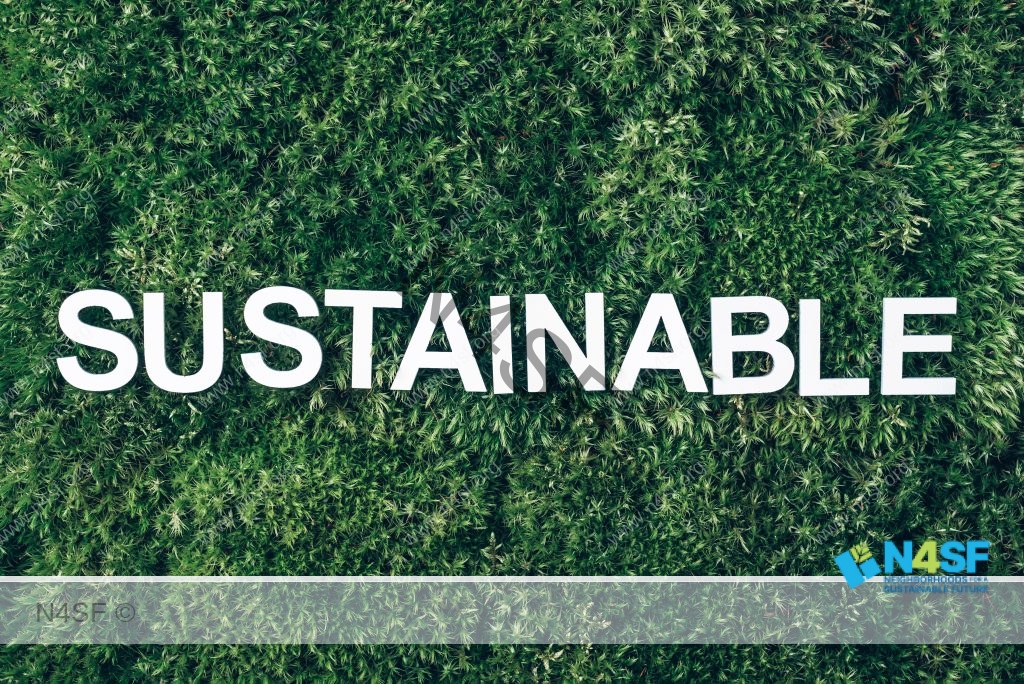Tips for Residents and Community Leaders in 2023
Creating a more sustainable neighborhood is a crucial step towards building a greener and more environmentally friendly future. Here, we will discuss 5 ways to create a more sustainable future.
In recent years, there has been a growing awareness of the impact that communities can have on the environment, and many residents and community leaders are looking for ways to reduce their carbon footprint and create more sustainable neighborhoods.
Here are five ways that residents and community leaders can work together to create a more sustainable neighborhood in 2023.
- Promote sustainable transportation
One of the biggest contributors to greenhouse gas emissions is transportation. Encouraging residents to use sustainable transportation options, such as public transportation, walking, or biking, is an excellent way to reduce the carbon footprint of a neighborhood. Community leaders can work with local transportation authorities to improve public transportation options and provide more bike lanes and pedestrian walkways. Additionally, promoting carpooling and offering incentives for those who use sustainable transportation options can also help to reduce emissions.
- Encourage the use of green spaces
Green spaces play an important role in reducing the carbon footprint of a neighborhood. They provide a place for residents to relax and enjoy nature, which can have a positive impact on mental health. Community leaders can work with local authorities to create parks, community gardens, and other green spaces that residents can enjoy. Additionally, promoting the use of green spaces by organizing events and activities can help to raise awareness of their importance.
- Reduce waste
Reducing waste is an important step towards creating a more sustainable neighborhood. Community leaders can work with local authorities to provide recycling programs, composting programs, and other waste reduction initiatives. Additionally, educating residents about the importance of reducing waste and providing them with information on how to do so can help to reduce the amount of waste generated in a neighborhood.
- Promote energy-efficient buildings
Buildings are significant contributors to greenhouse gas emissions, and it is important to encourage energy-efficient building practices. Community leaders can work with local authorities to promote energy-efficient building codes and provide incentives for residents to retrofit their homes with energy-efficient appliances and systems. Additionally, providing education and information on energy-efficient building practices can help to raise awareness of the importance of reducing energy use in buildings.
- Support local businesses
Supporting local businesses is an important step towards creating a more sustainable neighborhood. By supporting local businesses, residents can help to reduce the carbon footprint of their community by reducing the distance products have to travel. Community leaders can work with local authorities to promote local businesses and provide incentives for residents to support them. Additionally, organizing events and activities that promote local businesses can help to raise awareness of their importance.
The benefits of creating a more sustainable neighborhood include:
- Improved quality of life: Sustainable neighborhoods often offer green spaces, clean air, and reduced noise pollution, all of which can improve the quality of life for residents.
- Cost savings: Sustainable practices such as energy-efficient buildings and alternative transportation options can reduce energy costs for residents and the community as a whole.
- Healthier environment: By reducing air and water pollution, sustainable neighborhoods can help protect the health of residents and the wider community.
- Increased property values: Properties in sustainable neighborhoods are often in high demand and can command higher prices, increasing the value of the area as a whole.
- Community engagement: Sustainable neighborhoods often foster a sense of community and encourage residents to work together to create a better, more livable environment.
- Increased job opportunities: The development and implementation of sustainable practices can create job opportunities in fields such as renewable energy, green building, and sustainable transportation.
- Reduced carbon footprint: By reducing energy use and promoting alternative transportation options, sustainable neighborhoods can help reduce their carbon footprint and contribute to a healthier planet.
- Better preparedness for natural disasters: Sustainable neighborhoods that incorporate green spaces and resilient infrastructure are better equipped to withstand and recover from natural disasters.
- Legacy for future generations: By creating sustainable neighborhoods, we are leaving a positive legacy for future generations, ensuring a better future for all.
It is important to create sustainable neighborhoods for several reasons:
- Climate change: As the effects of climate change become more pronounced, it is increasingly important for communities to adopt sustainable practices to reduce their carbon footprint and mitigate the impacts of climate change.
- Resource depletion: By reducing resource consumption and promoting sustainability, we can help preserve the planet’s resources for future generations.
- Social equity: Sustainable neighborhoods can provide more equitable access to resources such as green spaces and clean air, which can help improve the health and well-being of all residents.
- Economic stability: Sustainable neighborhoods can contribute to economic stability by reducing energy costs and creating job opportunities in fields related to sustainability.
- Resilience: Sustainable neighborhoods are better equipped to withstand and recover from natural disasters and other disruptions, helping to ensure long-term stability and prosperity.
- Quality of life: Sustainable neighborhoods often offer improved quality of life through amenities such as green spaces, clean air, and reduced noise pollution.
- Community engagement: Sustainable neighborhoods foster a sense of community and encourage residents to work together to create a better environment, promoting social cohesion and community engagement.
- Legacy: By creating sustainable neighborhoods, we are leaving a positive legacy for future generations and helping to ensure a more sustainable future for all.
Creating a more sustainable neighborhood is an important step towards building a greener and more environmentally friendly future.
By promoting sustainable transportation, encouraging the use of green spaces, reducing waste, promoting energy-efficient buildings, and supporting local businesses, residents and community leaders can work together to create a more sustainable neighborhood in 2023.
Sources:
- “The Benefits of Sustainable Transportation in Neighborhoods,” Environmental Protection Agency (EPA), https://www.epa.gov/sustainable-communities/benefits-sustainable-transportation-neighborhoods
- “The Importance of Green Spaces in Urban Neighborhoods,” American Planning Association, https://www.planning.org/research/greeninfrastructure/urbanparks/
- “Reducing Waste in Your Neighborhood,” Keep America Beautiful, https://www.kab.org/programs/reduce-waste/reducing-waste-in-your-neighborhood
- “Energy-Efficient Buildings,” U.S. Department of Energy, https://www.energy.



